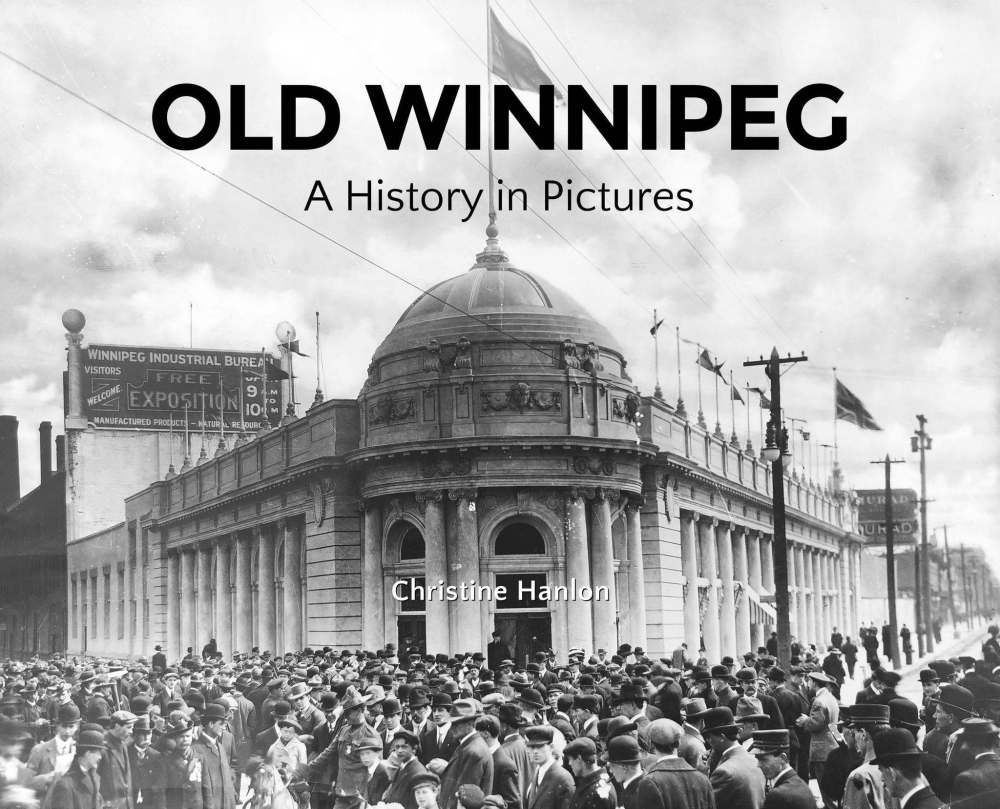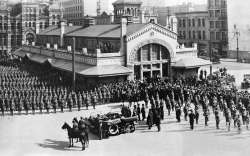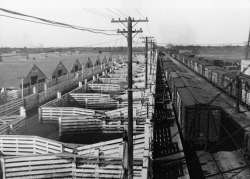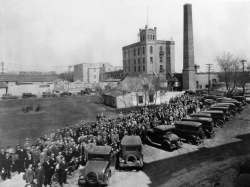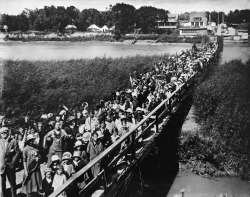Picturing the past New book a photographic tour of buildings that shaped city's history before disappearing
Read this article for free:
or
Already have an account? Log in here »
To continue reading, please subscribe:
Monthly Digital Subscription
$0 for the first 4 weeks*
- Enjoy unlimited reading on winnipegfreepress.com
- Read the E-Edition, our digital replica newspaper
- Access News Break, our award-winning app
- Play interactive puzzles
*No charge for 4 weeks then price increases to the regular rate of $19.00 plus GST every four weeks. Offer available to new and qualified returning subscribers only. Cancel any time.
Monthly Digital Subscription
$4.75/week*
- Enjoy unlimited reading on winnipegfreepress.com
- Read the E-Edition, our digital replica newspaper
- Access News Break, our award-winning app
- Play interactive puzzles
*Billed as $19 plus GST every four weeks. Cancel any time.
To continue reading, please subscribe:
Add Free Press access to your Brandon Sun subscription for only an additional
$1 for the first 4 weeks*
*Your next subscription payment will increase by $1.00 and you will be charged $16.99 plus GST for four weeks. After four weeks, your payment will increase to $23.99 plus GST every four weeks.
Read unlimited articles for free today:
or
Already have an account? Log in here »
Hey there, time traveller!
This article was published 27/10/2020 (1868 days ago), so information in it may no longer be current.
Winnipeg’s rich built history stands as a testament to our place in the history of Canada as a gateway to the west. And while areas such as the Exchange District offer a snapshot into a long-gone era, there are just as many buildings in the city that have been lost to fire, to progress or to decay.
Christine Hanlon’s new book, Old Winnipeg: A History in Pictures, published by McIntyre Purcell and launched virtually on Oct. 24, chronicles the structures that have come and gone over the last 170-plus years — from Upper Fort Garry, which stood until 1882, to the Public Safety Building, which was demolished this year.
“There are all these places that used to exist… that are part of our history, part of our story,” says Hanlon. “We’ve got pieces and reminders of them all over the city, whether it’s in a name, like River Park South or Polo Park, or whether it’s in physical pieces.”
In its 140-plus photos, Old Winnipeg goes beyond the city’s more iconic buildings of the past (the Eaton’s building, the Winnipeg Arena and the like), capturing some of the lesser-known gems that have come and gone. Those are some of Hanlon’s favourites.

“The Beachcomber Restaurant was the obvious one for me — I don’t know why. I guess because I had fond memories of the twinkling little stars on the ceiling,” she says of the eatery, which was housed at the Carlton Motor Hotel. The Beachcomber operated until 1990; the building was torn down in 2012 when what is now the RBC Convention Centre expanded.
Hanlon’s work on Old Winnipeg began after she had finished writing last year’s popular Everything Manitoba: The Ultimate Book of Lists. Hanlon scoured the Archives of Manitoba and the Legislative Library, as well as resources at the University of Winnipeg and University of Manitoba. She also consulted numerous local historians and online resources.
Rather than being organized by the buildings’ completion dates, Old Winnipeg is organized chronologically by the date of when the structure ceased to exist. “I’m just amazed at how the city’s always reinventing itself — I think that was something that really came through when I worked on the book,” Hanlon says.
While a number of buildings in the Exchange District and beyond date back well over a century, Old Winnipeg offers a window into just how many more of the city’s most impressive edifices, particularly in the late 19th century, lasted just a few decades or less. Winnipeg’s burgeoning population of the late 19th and early 20th century meant many buildings quickly became outdated, undersized or just plain irrelevant, and were rebuilt or demolished.
The Forks, for example, is recognized as a historically important Indigenous meeting place and, of course, a market and tourist destination today. But from 1872 to 1884 the site was home to modest immigration sheds, where newcomers heading west were housed and processed before proceeding.
“They were where the Children’s Museum is now. Practically all the people who went west during that time went through those sheds,” Hanlon explains.
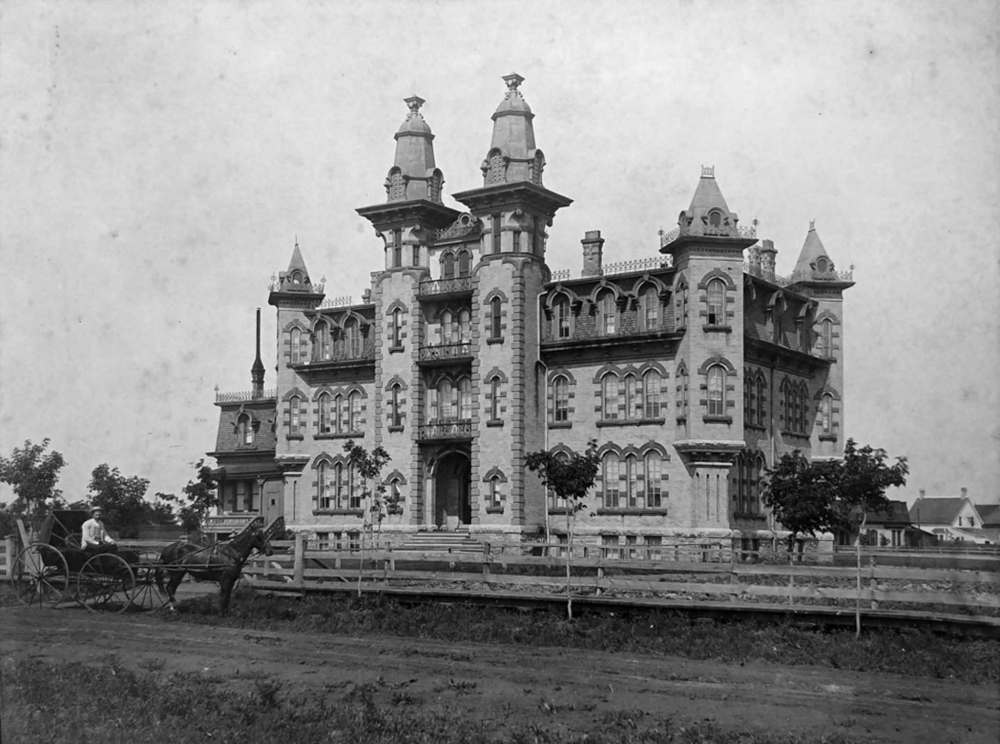
Many buildings in Winnipeg’s early years succumbed to fires. “I think that was what prompted the development of fire codes in the city,” Hanlon says. “People died in those fires.”
A 1922 fire at St. Boniface College, for example, claimed 10 lives, while four firefighters perished in 1926 trying to extinguish the flames at the Winnipeg Theatre, which stood near the current site of what is now the Burton Cummings Theatre.
In the process of writing Old Winnipeg, Hanlon began recognizing remnants of former structures strewn throughout the city. “Think of the Osborne Street bridge,” says Hanlon. “That used to be a lift bridge. There’s a picture of the bridge in the book that’s also on a mural on the wall of the Shoppers Drug Mart in the village. I saw it every day but didn’t really see it. And there’s that giant yellow gear in the Village that was part of the lift bridge. We often don’t put these pieces together, and they’re all around us.”

Writing and compiling Old Winnipeg also helped Hanlon develop an even greater respect for the buildings that remain, the people who designed and erected them, as well as those putting in the work to preserve them (and the memories of buildings long demolished).
“It made me appreciate organizations like Heritage Winnipeg, who make sure we preserve that heritage,” says Hanlon. “And also the work of the architects… they played such an important role.”
ben.sigurdson@freepress.mb.ca
Old Winnipeg: A History in Pictures

Our newsroom depends on a growing audience of readers to power our journalism. If you are not a paid reader, please consider becoming a subscriber.
Our newsroom depends on its audience of readers to power our journalism. Thank you for your support.
History
Updated on Wednesday, October 28, 2020 9:20 AM CDT: Corrects typo

